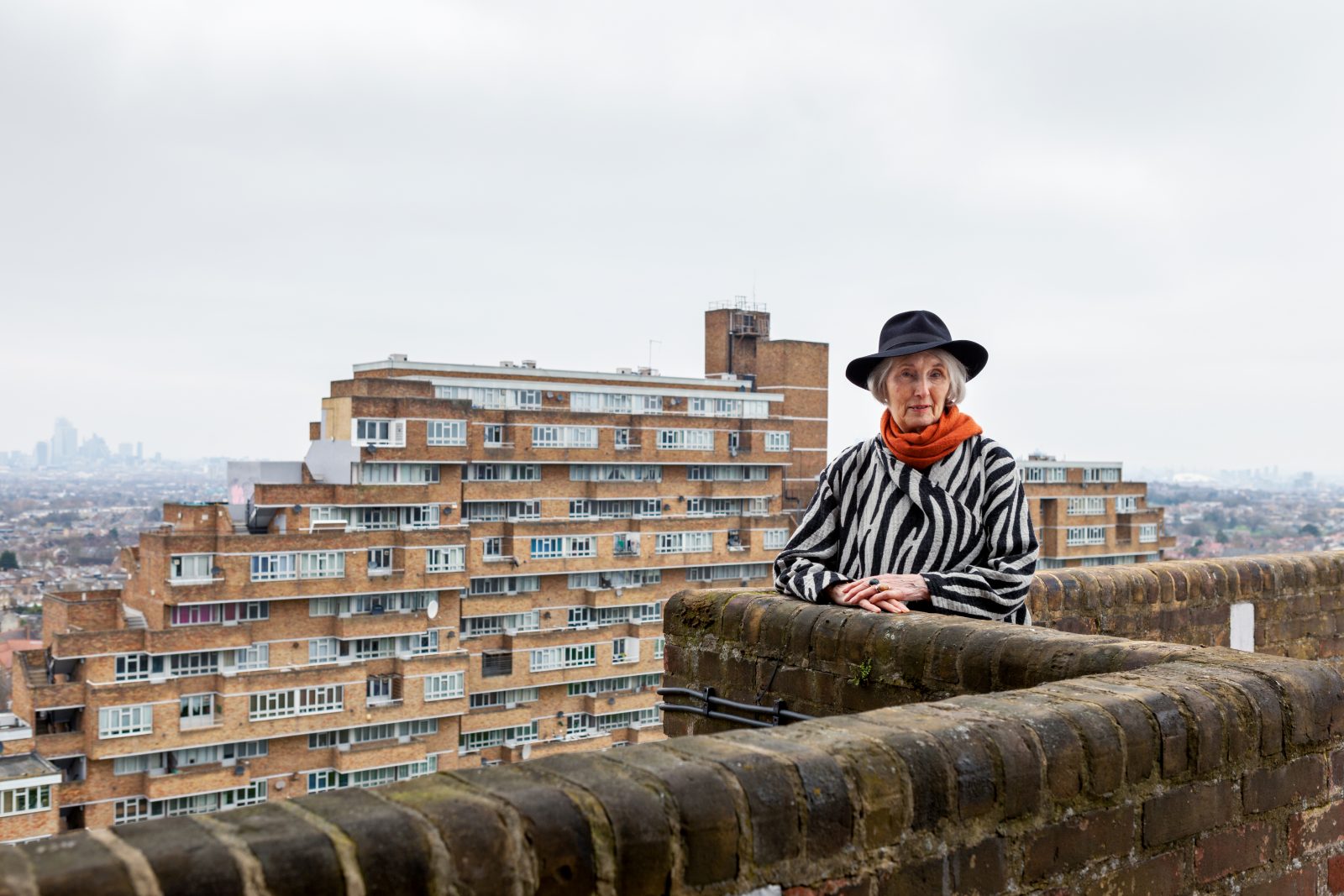Post
EVENT REPORT | The 2022 Thornton Lecture - Kate Macintosh: Architecture for Society
13 Apr 2022
Reviewed by Clare Richards
For any of the 500-strong audience in Stoke Newington last week to hear Kate Macintosh’s Thornton Lecture, ‘Architecture for Society’ there cannot be any doubt either of the important legacy of her public housing and socially inspired work, or of her passionate determination to confront the powerful forces that threaten communities and their environment. She has spent 60 years - so far - showing us how to do that – both as a successful and influential designer and as a tenacious campaigner, and in so doing she has set the bar for what so many of us are trying to do now.
I had the great privilege of introducing and inviting Kate to the stage and my colleague, Naomi Rubbra, led a conversation afterwards, all the more powerful for being a dialogue between a young architect - the age Kate was when she designed Dawson Heights, perhaps her best-known housing projects - and a true ‘elder’ of the profession. Don’t be fooled though – Kate is not leaving the stage anytime soon, and as she left I asked her what she is doing now. Her reply was: ‘ensuring they ditch VAT on the retrofitting of buildings!’.
There was a clear sense of before and after in what she said – the ‘before’ being her experience in the 60s in the London County Council Architect’s Department where, with George Finch, she saw and learnt first-hand the very clear social purpose of public housing delivery. Interestingly, she recalled the almost automatic regard for a pro-social architecture in the post-war 30 years or so, with most well-known architects of the day having worked for a local authority or new town corporation.
The ‘after’ was the Thatcher years onwards and what she described as the inevitable rise of a commercially driven and delivered housing sector. And that, she said, is precisely where we are now – “on that cliff edge”. She argued convincingly, to that end, that the volume housebuilders have a vested interest in maintaining high house prices and - well-supported by statistics - a continuing link between politics and the failure to address the housing crisis.
I was particularly struck, though, by the very personal connections she has maintained with her housing projects. It was clear that throughout her career she has listened to the needs of communities and learnt from the residents who have direct experience of her architecture. She has an extraordinary level of empathy, resulting from a deep knowledge of people and places and of the impact her work has had on them.
In the conversation with Naomi she talked about how and where she acquired her moral compass – not least from her mother – and what led her to be an activist. She talked movingly about the role of architecture in addressing inequality and injustice and what drives her to right some of the wrongs she has witnessed in her long career. Having herself just completed her architecture education, Naomi asked Kate (who has taught in a dozen or so architecture schools), what today’s students should be learning? The priority for her is the benefit good design can bring to housing which, in her view, isn't taken seriously in many schools of architecture. When asked her architect’s superpower of choice, she quickly replied, ‘developer speak! To stand the best chance of having an impact.’
In our preparation Naomi and I revisited Dawson Heights, where we doorstepped a resident as he was unlocking his front door, to ask him what the place is like. “Oh yes Kate”, he responded (how many people can name the architect of the place where they live and by her first name?) and then went on to say: “we’re from all walks of life around here, but this place brings us together”. Their comment is testament to an extraordinary designer and a remarkable woman.
Clare Richards is founder of Footwork, a charity working to identify and support local social innovators in their ambition to create positive change for people and places. Footwork focuses on the relationship between people, place and wellbeing, and the importance of local knowledge and action in creating resilient communities.
